While Boon, Peter Tea and I were poking around Ishii’s nursery outside of Nagoya last year, we came across a number of great Japanese maples. They looked familiar to us, but we didn’t immediately figure out why.
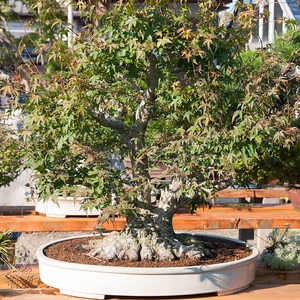
Japanese maple
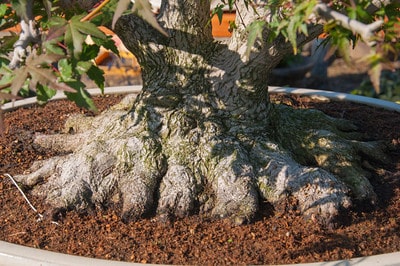
Great root base
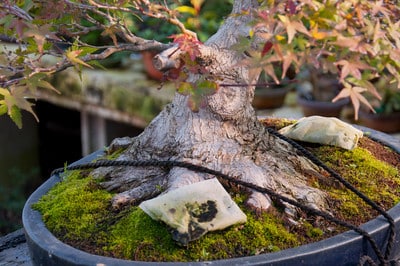
Another substantial root base
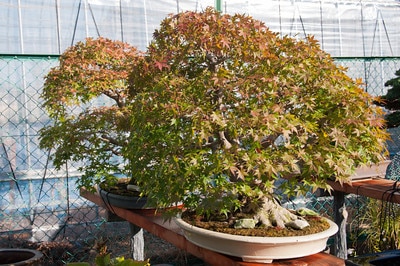
A pair of maples
It was the first time I’d seen these trees in leaf, but all the signs were there – great trunks, interesting branches, and a familiar technique for removing large branches one section at a time that encouraged resulting wounds to heal quickly. These had been Ebihara’s trees.
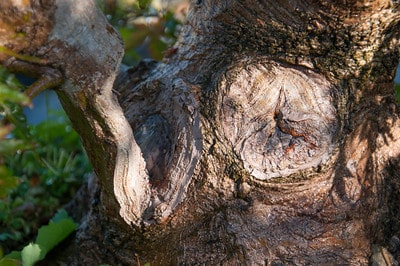
Removing a large branch
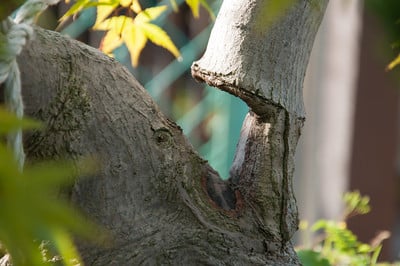
The patient approach to branch removal
It appears that Ishii acquired many of Ebihara’s bonsai when Ebihara was unable to care for his trees due to health reasons. Boon and I had seen these trees in 2009 sitting on directly on asphalt with duct tape or drainage screen doubling as pots.
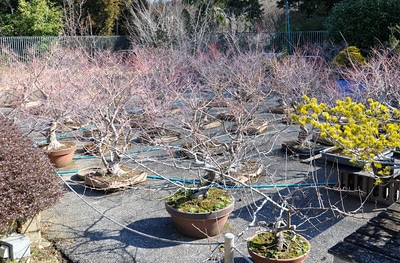
Maples at Ebihara’s garden, 2009
The containers remained the same at Ishii’s garden.
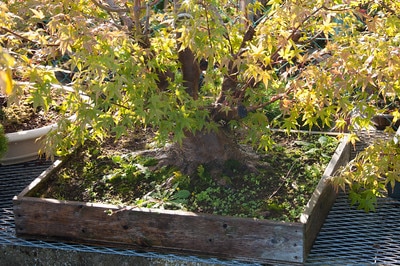
Developing maple in wood tray
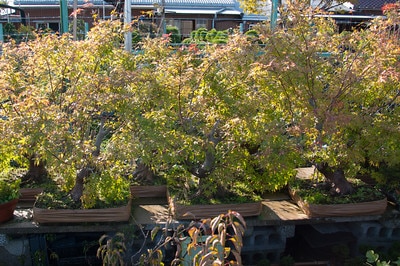
No pot needed for now
We also spotted a zuisho project from Ebihara. This was one of a number of large trees undergoing many grafts in a long-term effort to produce big zuisho bonsai. What a fun project!
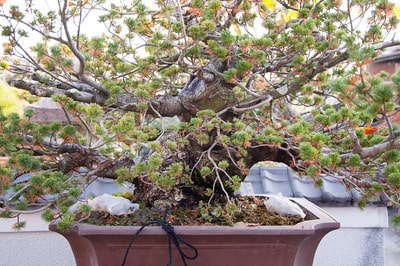
Zuisho
Subscribe to Bonsai Tonight
New Posts Delivered Every Tuesday and Friday
Stu Garrett says
Can you elaborate on the method of removing a branch and minimizing the scar?
John DeMaegd says
I too would like to know the method of removing branches this way!
Jonas Dupuich says
Hi John and Stu – by removing only part of a large branch, the remaining part can improve sap flow to the area and increase the speed with which the rest of the cut will heal: http://bonsaitonight.com/2011/08/02/big-cut-crape-myrtle/.
Dan – First Ebihara develops the trunk and root base by encouraging vigorous growth. During this stage, branches are selected with care and encouraged to grow freely. Once trunk and root base are in good shape, maybe after 10-15 years, branch refinement begins.
Daniel Dolan says
Jonas:
Interested in the photo of the large number of maples sitting on asphalt which appear being allowed to grow without pruning. Was this for an entire season…….was it intentional? Letting the tree just grow to add size to branches and trunks is understandable……..but don’t the branches in the apical zone get too thick owing to their greater vigor? Or is this just allowed to happen and they are removed later?
Thanks for the great images.
Best regards,
D/D
Chicago
Mac says
If you look at the photos you’ll see how it’s done. Thanks Jonas! Great technique.
Gilles says
Hello, thanks for sharing, this technique is very impressive, but about the cut, don’t you think that the best way could be to cut on the below of the branch ? because the main difficulty for close the cut appears on the below of the cut ?
Jonas Dupuich says
Good question Gilles – I don’t know if I have a good answer, I’ve always seen it done this way. The sap flow is strongest below the branch. It could be that maintaining the strong sap flow encourages faster healing and is safer for the health of the branch. This could make for a really simple experiment, I’ll keep it in mind. Thanks!
rishi says
that’s a great technique for healing wounds I will try this on a few of my maples next season…
Great information Thanks for sharing.